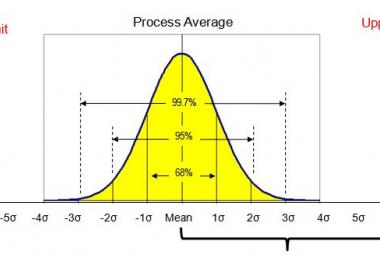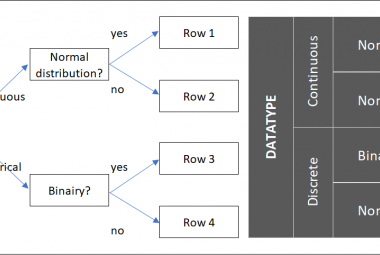The A3 is a tool that is used within Toyota as management tool (Shook, 2008). This tool is an actual A3 paper, which is used by managers to coach their team members while they are solving problems (Rother, 2010). This means that, where traditional managers will hand out tasks and only care about the results, the lean manager would like to hear how his mentee came to that solution. This article will describe what the A3 is, and three contexts in which it can be used: daily coaching, as part of the different forms of improvement activities and within the strategic catch-ball process.
We will learn that using the A3 is not about the form itself, but a tool to facilitate some sort of standardize storytelling, which is used to communicate facts and meaning in a common understood format (Shook, 2008).
Mike Rother (2010) summarizes the PURPOSE OF THE A3 in the following five points.
First, it is important to challenge the mentee to think about his problem so deeply, that he can distill his knowledge to only one A3 paper. If you have a big complex problem at hand, it will take some effort to be able to bring it down to a report of only one page.
Second, the A3 forms a storyline, which makes it possible for the mentor to follow the thinking steps of the mentee, shows the mentor what the next step for the mentee is to think about and what skills he might need to develop.
Third, instead of a vague discussion in which the conversation jumps between problems, causes and countermeasures, the A3 brings structure to the coaching conversation, by going through the steps one by one.
Fourth, using an A3 generates consensus and helps defining clear actions. When interviewing different people for a certain problem, the A3 can be updated with the latest insights continuously and in the end represent the consensus of the group.
Finally, it can provide milestones for process checks.

Figure 1: Example A3
The CONTENT OF THE A3 is described differently by different authors, but the general idea always include the different steps of the problem solving process. One example is shown in illustration 1. The different fields of this example A3 are:
A problem statement or current condition, which describes what the problem is, and sometimes also what it is not. This step alone can take quite some time and can include multiple revisions (Shook, 2008).
The breakdown of the problem helps to dive deeper into the problem and to describe the different sub-problems that possibly lead to the general problem statement. The more complex the problem that needs to be solved, the more useful this field is.
The goal or the target condition of this A3 summarizes what the mentee has to achieve in terms of measurable results. This makes sure the mentee knows up front when later defined countermeasures will be accepted by the manager or his team.
The route cause analysis is the next step on the A3 form. This is where fish bone diagrams, 5xWhy or a problem analysis tree can be used to clarify where the root cause(s) of the problem can be found.
Then it is time for the countermeasures to be defined. What can be done to preventatively solve the problems? It is important to note, that one problem can contain multiple root causes, and one root cause may need multiple countermeasures to reach the target condition (Shook, 2008).
The sixth field gives you space to shortly mention information about implemented countermeasures, after which the results of the countermeasures are measured in field 7.
When the countermeasures were successful in solving the problem, the mentee can use the last field of the A3 can address what standards need to be updated and shared, to make sure the learning is embedded in the standard work of colleagues, who´s work might have changed due to the countermeasures.
Here are some examples of WHEN TO USE THE A3.
Since A3 structures thinking and facilitates reporting in as little text as possible, the A3 is a perfect tool for one-to-one coaching in the daily improvement process (Rother, 2010). Imagine having multiple team members all working on different improvements (or kaizens). It could be difficult to remember in what stage of the PDCA cycle your mentees are. The A3 makes it possible to repeat the status of the improvement and keep focus on the target condition (usually reducing one of the 3M´s), the reason why we are doing something at all (Rother, 2010).
The same counts for coaching within the daily management structure for problem solving (Jackson, 2006). In this case, a defect occurred somewhere in the process, and it is the task of the mentee to learn why this problem occurred and how to solve it.
In a broader sense, the template could also be used for managing projects. In a project management environment, it is not uncommon to have long meetings in which certain causes or countermeasures are discussed, without clearly repeating what the goals of the project are and whether or not the countermeasures are actually helping us achieve those goals.
In terms of process design, the A3 template can be used when the kaizen events are defined after a Value Stream Mapping event. The 8 steps of creating a future state VSM will lead the team to a list of necessary improvements in the design of the process, each for which an A3 template can be used.
Finally, on strategic level, A3 documents can be used during the Catch Ball process of Hoshin Kanri (Jackson, 2006). In this case, every Tactic listed in the X-matrix can be captured on an A3 template.
The A3 is a simple tool that can bring huge benefits to the company. Forget PowerPoints or reports that count a countless number of pages. By challenging everybody in the organization to condense all information necessary to one single A3 page, we can increase our problem solving- , our improvement -and our coaching capabilities at the same time!
Continue reading:
Practical Problem Solving (3C & 5W)
REFERENCES:
Jackson, T. (2006). Hoshin Kanri for the Lean Enterprise – Developing Competitive Capabilities and Managing Profits. Boca Raton: CRC Press. (summary / order this book)
Rother, M. (2010). Toyota Kata: Managing people for Improvement, Adaptiveness and Superior Results. New York: McGraw Hill. (summary / order this book)
Shook, J. (2008). Managing to Learn. Cambridge: Lean Enterprise Institute. (order this book)












